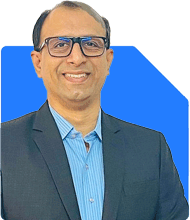Mahesh Padmanabhan | Answer |Ask -Follow
Tax Expert - Answered on Feb 22, 2023
He is a member of The Institute of Chartered Accountants of India and has a degree in cost accounting from the Institute of Cost Accountants of India.
He is also a qualified information systems auditor. ... more

Under the old Tax regime what is the Maximum Income that is tax free. While filing ITR do we have to choose which regime we want?
The threshold tax free limit for individuals below the age of 60 is Rs. 2.50 Lakhs under the old tax regime.
Yes while filing it would be relevant to first evaluate which tax regime yields rationalized tax and thereafter choose that regime
You may like to see similar questions and answers below
Sanjeev Govila | Answer |Ask -Follow
Financial Planner - Answered on Feb 08, 2023
Vivek Lala |323 Answers |Ask -Follow
Tax, MF Expert - Answered on Apr 21, 2023
T S Khurana |538 Answers |Ask -Follow
Tax Expert - Answered on Aug 14, 2024
Milind Vadjikar | Answer |Ask -Follow
Insurance, Stocks, MF, PF Expert - Answered on Sep 29, 2024
Vipul Bhavsar | Answer |Ask -Follow
Tax Expert - Answered on Apr 29, 2025
Naveenn Kummar |237 Answers |Ask -Follow
Financial Planner, MF, Insurance Expert - Answered on Dec 20, 2025
Ramalingam Kalirajan |10906 Answers |Ask -Follow
Mutual Funds, Financial Planning Expert - Answered on Dec 19, 2025
Nayagam P P |10859 Answers |Ask -Follow
Career Counsellor - Answered on Dec 19, 2025
Ramalingam Kalirajan |10906 Answers |Ask -Follow
Mutual Funds, Financial Planning Expert - Answered on Dec 19, 2025
Ramalingam Kalirajan |10906 Answers |Ask -Follow
Mutual Funds, Financial Planning Expert - Answered on Dec 19, 2025
Ramalingam Kalirajan |10906 Answers |Ask -Follow
Mutual Funds, Financial Planning Expert - Answered on Dec 19, 2025
Radheshyam Zanwar |6751 Answers |Ask -Follow
MHT-CET, IIT-JEE, NEET-UG Expert - Answered on Dec 19, 2025
Radheshyam Zanwar |6751 Answers |Ask -Follow
MHT-CET, IIT-JEE, NEET-UG Expert - Answered on Dec 19, 2025
Samraat Jadhav |2514 Answers |Ask -Follow
Stock Market Expert - Answered on Dec 18, 2025
Reetika Sharma |432 Answers |Ask -Follow
Financial Planner, MF and Insurance Expert - Answered on Dec 18, 2025





























